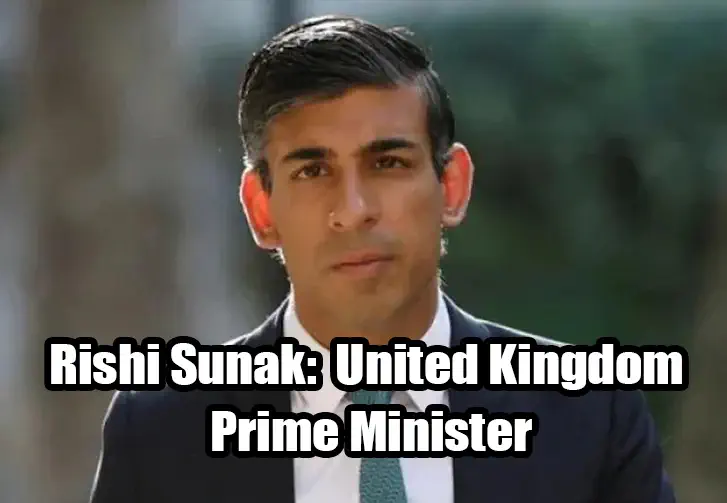
India and the United Kingdom have always enjoyed a special relationship. Prime Minister Narendra Modi has made remarkable progress in strengthening this relationship by doubling down on personal diplomacy with UK leaders and making institutional changes that ensure better collaboration between Indian and UK businesses, universities, think tanks, and other institutions.
These are challenging times for the global economy. Protectionism is on the rise around the world. If left unchecked, it will undoubtedly have negative consequences on global trade and growth. The UK is India’s third-largest trading partner, accounting for over £12 billion worth of goods exported every year from India to the UK alone. In order to ensure this partnership continues to flourish, there are three things everyone should know about the new British Prime Minister, Rishi Sunak.
Who is Rishi Sunak?
Rishi Sunak is a 34-year-old Member of Parliament from the ruling Conservative party, having won the South Northamptonshire seat during the last general elections. A brilliant Oxford graduate and former investment banker, he is credited with helping curate and conceptualize the Conservative party’s vision for a post-Brexit Britain.
He was appointed as the Minister of State for Housing, Communities, and Local Government in July 2018. During the 5 years he was an MP, he was a member of the Treasury Select Committee, Treasury Committee, the Committee on Challenges of Global Warming and Climate Change, and the Northern Ireland Affairs Committee.
Why is the UK important to India?
A strong Britain is critical to India’s own economic growth. One of the top destinations for investment by Indian companies, Britain is home to a large and thriving Indian diaspora. A record-breaking travel season in 2018 saw an unprecedented 10 million Indian visitors to the UK, worth over £9 billion to the British tourist industry.
A growing economic partnership between the two countries is also worth celebrating. British goods exported to India are growing at a rate of 7%, and are worth £12 billion per year. Meanwhile, Indian manufactured goods sold to the UK are 30% cheaper than products made in other countries, allowing Indian producers to gain a larger share of the British market.
What does the future hold for UK-India relations?
Prime Minister Modi’s visit to the UK in April 2018 was a watershed moment for the partnership between the two countries. It marked the first-ever state visit by an Indian Prime Minister to the UK in over 15 years.
The two leaders agreed on a Strategic Partnership, outlining specific areas of collaboration to strengthen the relationship between the two countries. These include innovation, skills, trade, cyber security, and the Indo-Pacific region. The partnership also includes a new annual bilateral dialogue between the UK and Indian foreign and trade ministers.
What does this mean for Indians working in the UK?
The Indian diaspora in the UK has been instrumental in shaping the relationship between the two countries over the last 60 years. A record-breaking 1.1 million Indians currently live in the UK, and they make up the second-largest foreign-born population in the country.
The Indian PM’s pledge to grant visas to an additional 1 million skilled workers from countries like the UK will make it easier for employees from these countries to work in India. It will also create more opportunities for Indians currently living in the UK to find employment in India.
Why does it matter that Theresa May has appointed a new PM?
Theresa May became Prime Minister of the United Kingdom in July 2016, during the height of its Brexit negotiations. The deadline for the UK to leave the EU was set for March 29, 2019.
She appointed Rishi Sunak as Chancellor of the Exchequer, effectively making him the UK’s Finance Minister. Sharing the same political ideology as the Indian PM, the relationship between the two countries flourished under the leadership of these two world leaders. But the formation of a new British Cabinet changed everything.
Brexit on the horizon: What does this mean for India?
Prime Minister Modi’s visit to the UK in April 2018 was a watershed moment for the UK-India partnership. It marked the first-ever state visit by an Indian PM to the UK in over 15 years. The two leaders agreed on a Strategic Partnership, outlining specific areas of collaboration to strengthen the relationship between the two countries.
These included innovation, skills, trade, cyber security, and the Indo-Pacific region. The partnership also included a new annual bilateral dialogue between the UK and Indian foreign and trade ministers.
The two countries also agreed to work towards a new trade deal once the UK has left the EU. This will allow the UK to maintain a strong trading relationship with India after Brexit while also maintaining its autonomy.
I will unite our country, not with words, but with action.
I will work day in and day out to deliver for you.
Watch my speech from Downing Street 👇 pic.twitter.com/diOBuwBqXc
— Rishi Sunak (@RishiSunak) October 25, 2022
A trade deal with India is top of the UK’s priority list.
A trade deal with India is the top priority on the UK’s list of post-Brexit trade deals. The UK-India trade negotiations have been underway since 2016, with both sides committed to concluding a mutually beneficial agreement as soon as possible.
Both countries want to avoid a scenario where they have to renegotiate the terms of their trade deal once the UK has left the EU. A legally binding trade deal between the UK and India will create new opportunities for businesses on both sides, such as easing the flow of goods and services between the two countries. Read Other Related Content: Draupadi Murmu
Why does the UK need more Indian talent?
The UK is the second-largest importer of Indian IT services in the world, with more than 66% of the country’s IT being sourced from India. The Indian IT industry accounts for over $100 billion worth of exports annually.
The UK’s dependence on Indian talent is expected to increase, especially in the wake of Brexit. The UK-India visa agreement allows Indian workers to obtain a UK visa more easily and vice versa. More Indian workers are choosing to move to the UK and other countries, including Australia and Canada, in the face of growing protectionism around the world.
What does a post-Brexit trade deal with India look like?
The UK and India are already working on a post-Brexit bilateral trade deal. The two countries seek to deepen their commercial and investment ties after the UK leaves the EU.
All signs point to a mutually beneficial trade deal that will boost trade and investment between the UK and India. The UK is India’s third-largest trading partner, accounting for over £12 billion worth of goods exported annually from India to the UK alone.
Additionally, the UK is India’s fifth-largest trading partner, with bilateral trade worth about £15 billion. A post-Brexit trade deal between the two countries will build on their existing commercial relationship and offer new opportunities for businesses in both countries.
Read Other Useful Post: Serena Williams Exit
Summing Up
The UK has always been a major trading partner for India, and with Brexit it is important to strengthen the ties even more. Whilst this will be a challenge, it is also an opportunity to increase the flow of goods and services between the two countries. This can be increased by establishing joint ventures, trade missions and other schemes.




